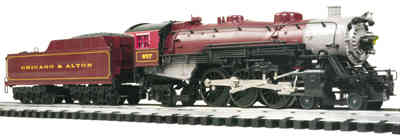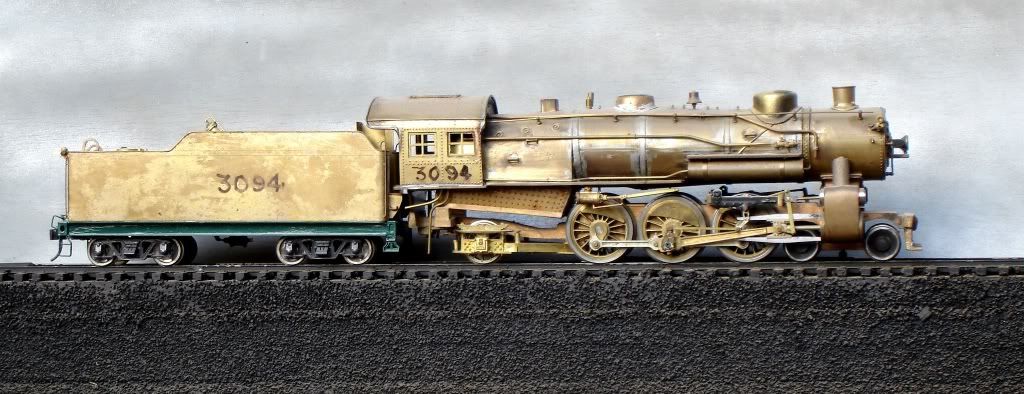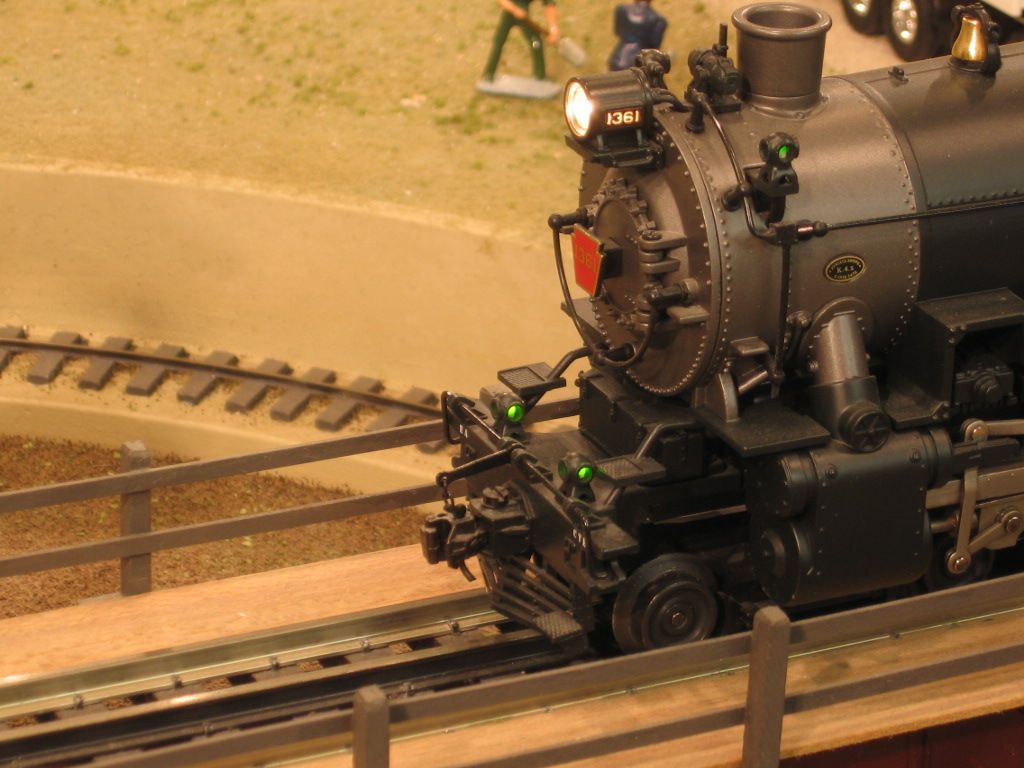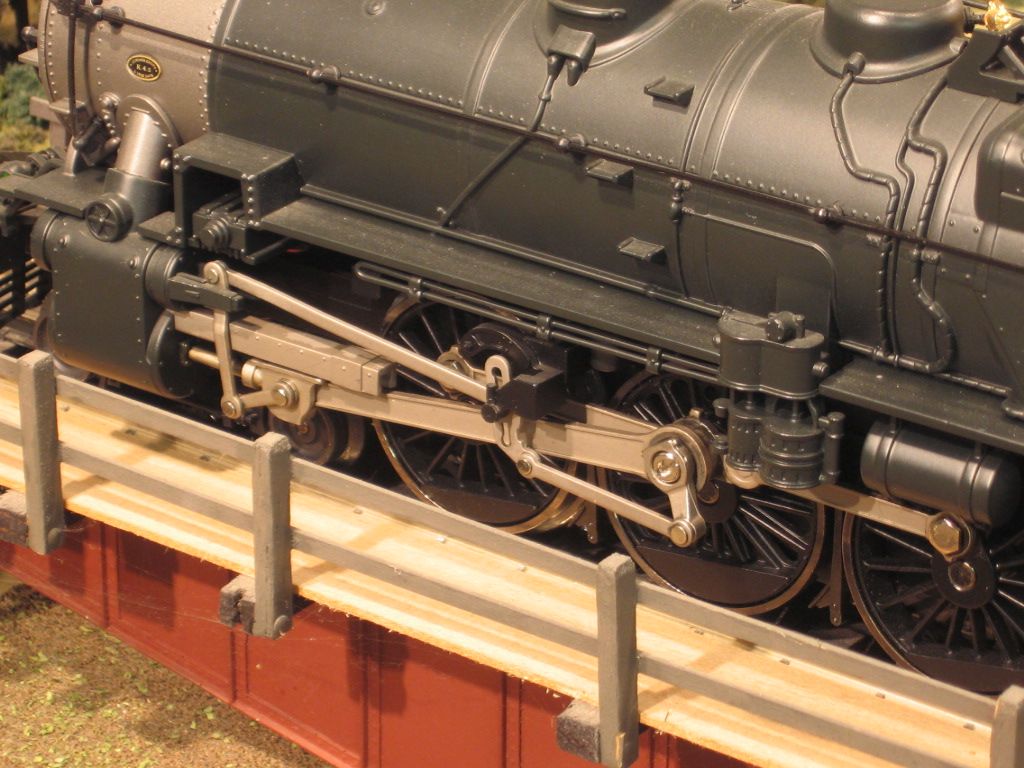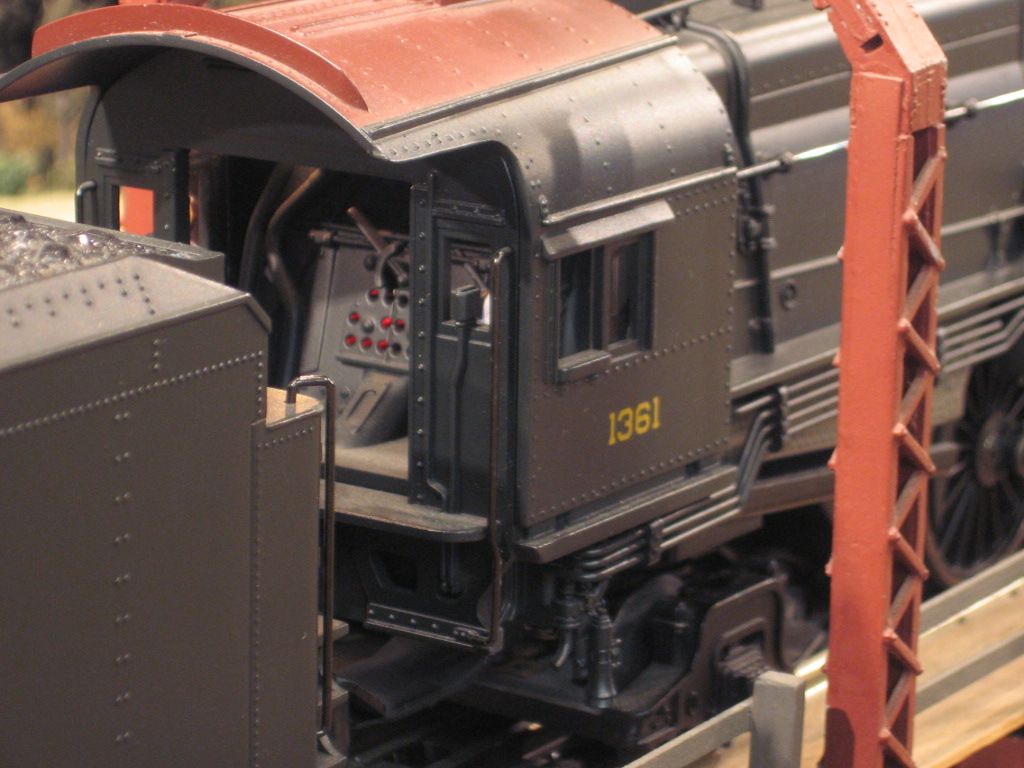The 4-6-2 Pacific type locomotive was quite simply the most important type of steam passenger locomotive in the world. First developed at the turn of the 20th century the Pacific soon evolved into the worlds premier express passenger locomotive, a place it held without challenge for over 20 years.
The Pacific had the advantages enjoyed by the five axled passenger locomotives that proceeded it without their limitations. Pacifics had the same stable tracking qualities as ten wheelers and Atlantics thanks to the the four wheeled engine truck that all three types incorporated. The three driving axles gave Pacifics a starting tractive effort capability as good as ten wheelers and 50% better than Atlantics of similar axle loadings and adhesion factors. The Pacific had the wide, deep fire box of an Atlantic and had the length to incorporate longer fire tubes than an Atlantic or Ten Wheeler and the ability to incorporate a combustion chamber. The Pacific gave railroads a locomotive that could start an eight car train and had the horsepower to move it at 60 mph or more.
With locomotives like the Pacific railroads could build schedules to provide service between the east coast and Chicago in a day and between Chicago and the west coast in two and a half days. With the advent of Pullman sleepers, lounge cars and excellent dining car menus long distance travel ceased to be an ordeal to be endured and the age of glamorous travel began.
Several different O scale diecast Pacific models have been available from MTH, K-Line, Weaver and Lionel. In fact, Pacifics made on tooling for two different K-Line Pacifics have gone on to be sold by other train companies. Let's take a look at the modern era O scale diecast pacific models by manufacturer before touching on a few of the brass Pacifics that have been produced.
MTH Pacifics
The MTH USRA Heavy Pacific was introduced in 1994 and has continued in production with several more runs up to the latest catalog. It has been used to represent the original Erie USRA Heavy Pacifics as well as a stand in for railroad specific 4-6-2 designs. The MTH USRA Pacifics have proven to be excellent performers. The earliest models are good candidates for command upgrades.
Alaska RR 902, 20-3604-1 2015 Volume II is numbered for one of the Alaska Railroads pair of Pacifics.
ATSF 3421 20-3008-1, Fall 1994
ATSF 3408, 20-3395-1 2010 Volume I

B&O 5305 20-3103-1 2003 Volume I
B&O 5213 20-3396-1 2010 Volume I

C&A 5299, 20-3085-1 2002 Volume II is numbered for Chicago & Alton Class P-16 and production versions came with an 8 wheel tender.

C&O 407, 20-3603-1 2015 Volume II is numbered for former Pere Marquette SP2/C&O F-12
The MTH Erie Pacifics are numbered for Erie K-5 and K-5A Pacifics
Erie 2924, 20-3397-1 2010 Volume I
Erie 2935, 20-3086-1 2002 Volume II

GM&O 5296, 20-3087-1 2002 Volume II is numbered for a former Alton Class P-16B Pacific.

L&N 266, 20-3104-1 2003 Volume I is numbered for a USRA light Pacific

Milwaukee 197, 20-3602-1 2015 Volume II is numbered for a Milwaukee Road F-3 Pacific
The MTH New York Central heavy Pacifics are numbered for NYC K-5s.
NYC 4912, 20-3007-1 Fall 1994
NYC 4913, 20-3394-1 2010 Volume I

UP 161, 20-3088-1 2002 Volume II

WM 204, 20-3605-1 2015 Volume II is numbered for a Western Maryland K-2.
MTH also debuted their Southern PS-4 Pacific in 1994 and they have continued to offer updated versions with ProtoSound 2 and Protosound 3.
SOU 1396 20-3005-1 Fall 1994
SOU 1401 20-3006-1 Fall 1994

SOU 1395 20-3102-1 2003 Volume I Crescent Limited

SOU 1393 20-3463-1 2011 Volume II Crescent Limited Set

SOU 1375 20-3464-1 2011 Volume II Black

CNO&TP 6688 20-3465-1, 2011 Volume II Queen & Crescent

SOU 1407 1407, 20-3466-1 2011 Volume II

MTH is the only maker of an O scale diecast model specifically based on the Central Railroad of New Jersey's exceptionally large and powerful P47 class Pacifics. While most famous for their beautiful Blue Comet livery MTH has also offered CNJ P47 models in prototypical green and black. MTH has also used the P47 as a stand in for other large Pacifics from northeastern railroads. The MTH P47 has been available in 2 rail and three rail with ProtoSound, ProtoSound 2 and ProtoSound 3 electronics.
CNJ 831 20-3255-1,-2 2006 Volume II
CNJ 832 20-3461-1,-2 2011 Volume II
CNJ 833 20-3028-1 1998 Volume II
CNJ 833 20-3460-1 Set 2011 Volume II


CNJ 834 20-3136-1,-2 2004 Volume II Green

CNJ 835 20-3138-1,-2 2004 Volume II Black
CNJ 835 20-3462-1,-2 2011 Volume II Black

B&M 3638, 20-3140-1,-2 2004 Volume II
B&M 3702, 20-3256-1,-2 2006 Volume II

DL&W 1134, 20-3137-1,-2 2004 Volume II

GT 5633, 20-3257-1,-2 2006 Volume II

NKP 162, 20-3139-1,-2 2004 Volume II

The Pennsylvania K4s first appeared in the pages of an MTH catalog in 1996. A modernized version with cast steel pilot, drop coupler and high mounted headlight debuted in 2004. A model of the Raymond Lowey streamlined PRR 3768 appeared in 2007. All versions have been offered in 2 rail, three rail as well as ProtoSound 2 and ProtoSound 3.
PRR 5400, 20-3018-1,-2 Summer 1996 Gold tender striping
PRR 5495, 20-3019-1,-2 Summer 1996
PRR 837, 20-3296-1,-2 2007 Volume II Gold

PRR 1737, 20-3125-1 2004 Volume I Gold and white striping
PRR 5493, 20-3471-1,-2 2011 Volume II

PRR 20-3467-1 Set 2011 Volume II
![]()
PRR 20-3468-1 Set 2011 Volume II
![]()
PRR 5409, 20-3469-1,-2 2011 Volume II Tuscan

PRR Modernized K-4
PRR 1361, 20-3126-1 2004 Volume I
PRR 12, 20-3295-1,-2 2007 Volume II
PRR 3750, 20-3472-1,-2 2011 Volume II

PRR 3676, 20-3470-1,-2 2011 Volume II Futura lettering.

PRR Streamlined K-4
PRR 3768, 20-3297-1,-2 2007 Volume II
PRR 3768, 20-3299-1 Set 2008 Volume I
PRR 3768, 20-3473-1,-2 2011 Volume II
PRR 3768, 20-10006 Set Uncataloged
PRR 3768, 20-81002-1 2014 Signature Weathered

K-Line Pacifics and their successors.
One of the last O Scale locomotives introduced by K-Line was a model of the USRA Light Pacific. It appeared as a separate sale item and in several sets before the demise of K-Line.
ACL K-1431 Palmetto Limited set
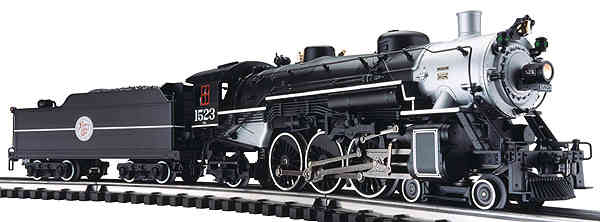
B&O K3310-5217W Blue
B&O K-1432 Capitol Limited Set
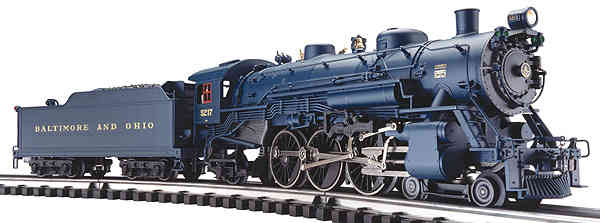
B&O K3310-5225W Black
B&O K-1434 Freight Set

FEC K-1433 Florida Limited Set
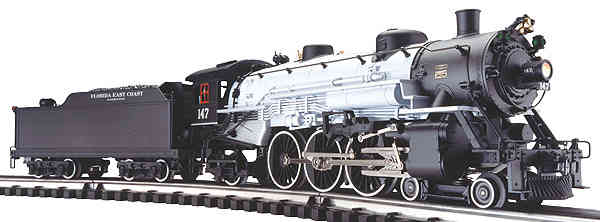
Undecorated K-1430 Pullman Set

Weaver also marketed USRA Light Pacifics made in Asia on the same tooling as the K-Line models. Weaver light Pacifics were available in both 2 and 3 rail versions in 13 road names, not all of which were in fact USRA light pacific operators. After first appearing in the Spring 2005 catalog they remained in Weaver's advertising until sold out. Road names offered were ATSF, B&M, CN, C&NW, GTW, IC, L&N, LV, MEC, MILW, N&W, WM and US Army.
K-Line also produce a model of the Pennsylvania Railroad K4 Pacific that remains well regarded for its scale fidelity. Conventional and TMCC versions are designated by CV or TC suffixes on the model number.
K3380-5338 Pre-War

K3380-3876 Smoke Deflectors
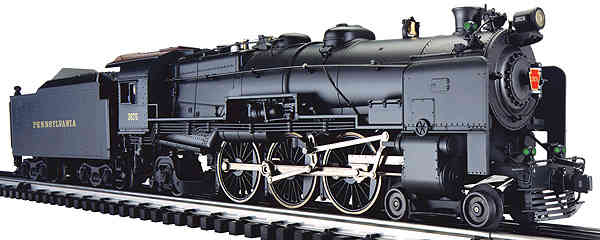
K3380-1361 Post-war
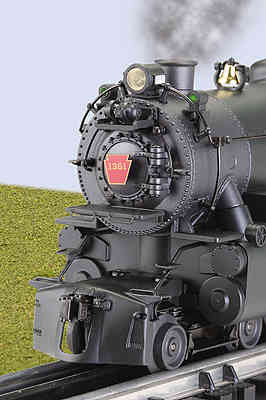
Lionel entered the PRR K-4 market with their own model in 2002. It has a longer than scale fire box that is visually noticeable by many modelers.
PRR 1361 6-38025 2002 Volume I
PRR 5385 6-38044 2002 Volume I

Lionel has used updated K-Line tooling to produce a more dimensionally accurate model for their Legacy equipped K4s. As with other builders, modernized and early versions of the K4 are available.
PRR 1361 6-11264 Legacy
PRR 1330 6-11265 Legacy
PRR 1361 6-11266 Conventional

PRR 5409 6-11319 2013 Signature Legacy Tuscan
PRR 5436 6-11320 2013 Signature Conventional Tuscan

PRR 3667 6-11327 2011 Signature Legacy
PRR 3672 6-11328 2011 Signature Legacy
PRR 3678 6-11329 2011 Signature Conventional

Lionel has offered several variations of their large Pacific.
Alton 659 6-31704 2003 Volume I
Alton 657 6-11338 2012 Volume II

B&O P-7 President Harrison 6-28066 2001 Volume I

C&O F-19
C&O 494 6-11108 2007 Volume II George Washington
C&O 490 6-11128 2007 Volume II

CNJ Blue Comet
CNJ 832 6-11335 2012
CNJ 833 6-11423 2013

Erie 2934 6-28067 2001 Volume I

Southern 1403, 6-11103 2006 Volume 2
Southern 1393, 6-11334 2012 Signature

A wide variety of Pacifics have been produced in O scale brass.
Sunset/3rd Rail is offering a model of the USRA Heavy Pacific derived B&O P-7e
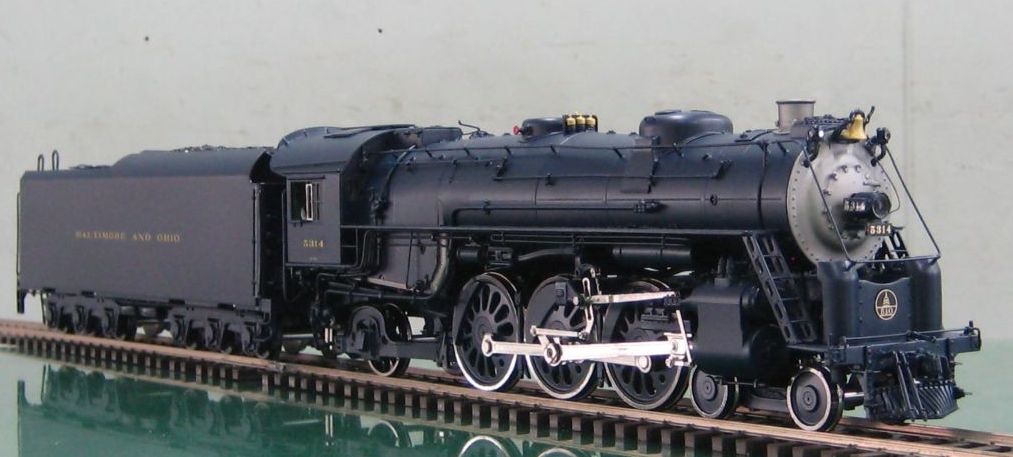
Weaver Brass pacifics include
AT&SF Valley Flyer
B&M P4

Lehigh Valley K6

Reading G1sa, G2sa
For more information about other O scale locomotives see the O Scale Locomotive Guide.
https://ogrforum.com/t...ale-locomotive-guide
And for information on scale freight cars see O Scale Freight Car Guide.
https://ogrforum.com/t...le-freight-car-guide
Let's see photos of your O scale Pacifics! ![]()


